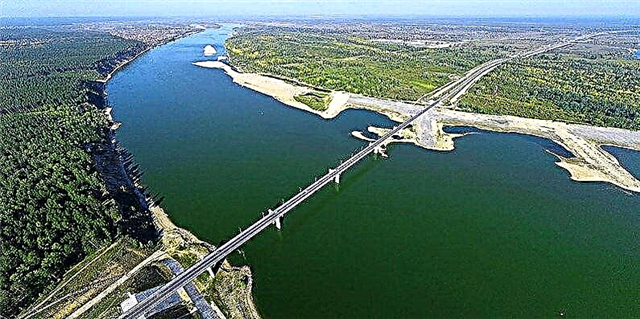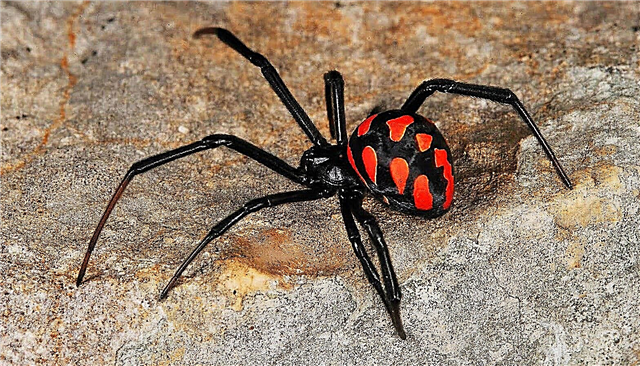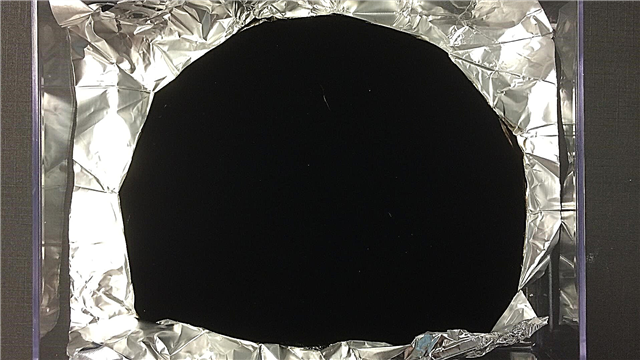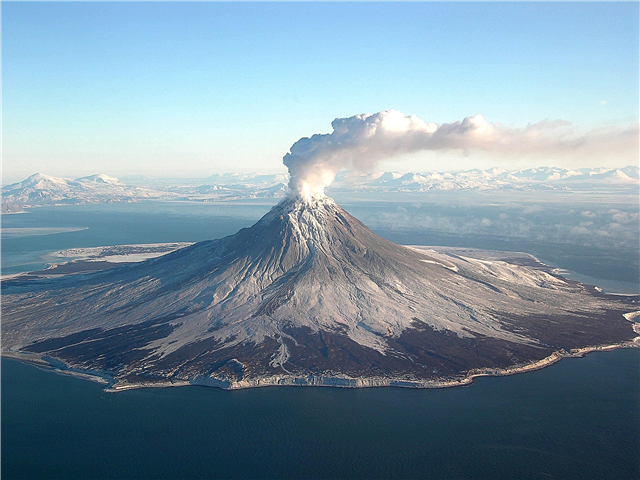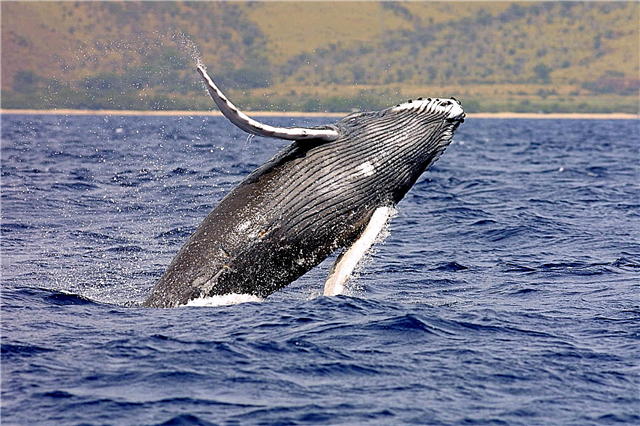
There are a large number of fast-growing trees and plants on the planet. Accelerated enough can rise up and spread duckweed and liana.
In fact, the interest in fast-growing plants in people has not just appeared. After all, such representatives of nature provide impressive resources for industry. Such trees and plants contribute to a stable harvest, help people maintain their beauty, clean environment.
Seventh place

Acacia is a tree up to 25 m high and a trunk diameter of up to 1.2 m. In the first year of life it reaches 0.75-1.5 m, in the second - 2-2.5 m, in the third - up to 4-5 m. with a trunk girth of 3-4 cm. At the age of 12-15 years, the tree reaches 15-18 m. The stable elevation of the trees ends by 25-30 years.
Some varieties of acacia are suitable for cooking. Seeds are rich in protein, they are used for baking bread. Acacia roots and juice are added to various dishes. People cook pancakes with plant flowers. Acacia wood is suitable for furniture.
Sixth place
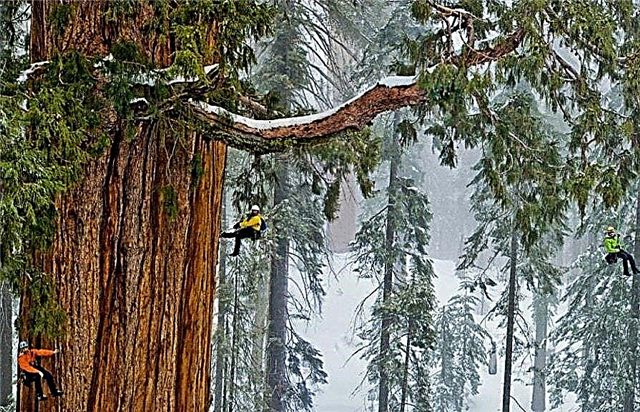
The giant sequoia is in sixth place in terms of growth rate. The height of old trees can reach up to 100 meters with a trunk diameter of 10-12 m. The tree grows 120-150 cm per year for 10 years and then can add 60 cm over each next year for 30 years. Sequoia is able to continue to grow in diameter every year.
Studies have shown that sequoia, called the General Sherman tree, increased by 100 cm in girth over 40 years.The highest sequoia was found in 2006 and its height was 115, 61 m. 15 trees have a height exceeding 110 m, and more than 47 trees have 105 m.
Fifth place
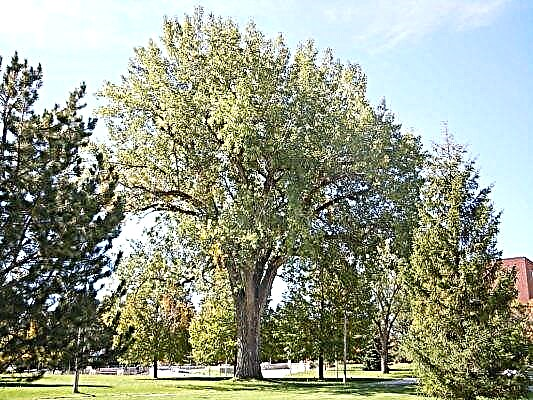
Eastern Cottonwood or Poplar Deltoid is a fast-growing tree along streams, rivers and lowlands, native to North America. The deltoid poplar grows by 300-450 cm per year and is able to repeat a similar indicator for long years. Even if the growth phase ends, the tree continues to grow and rises 150 cm per year for 25 years.
Fourth place

Small duckweed grows at high speed. These are tiny perennial plants floating in huge numbers on the surface of stagnant waters. Every 30 hours, representatives of its various species are able to re-go through the full life cycle. Theoretically, if duckweed could constantly grow with high productivity, it would be able to create 4 Earth masses in 4 months.
Third place

Hybrid poplar is a shady tree, which in 5 years reaches 8 m. Height, which makes it popular in industries. If you cut it down at this age, a new tree will sprout from the stump, and so on one root you can grow 5 trees. The diameter of the trunk is 30-35 cm. Poplar grows on moist soil and is able to rehabilitate the soil during growth. The tree is considered a natural water filter. Poplars can rise 300 cm per year. These are powerful trees towering 40-45 m and, sometimes, 60 m.
Poplar wood is used in the construction of railways. It is light, white and easily processed, therefore it is used as a raw material for paper, artificial silk, as well as match straws, furniture.
Second place
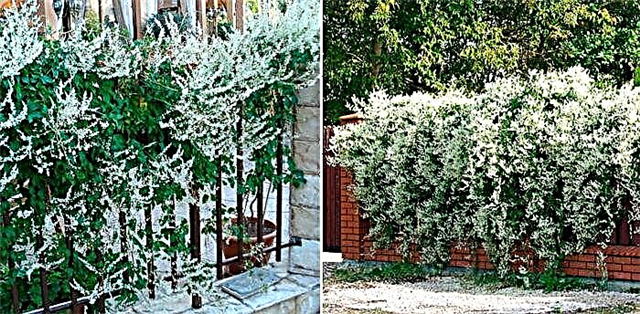
The fallopia of an Hubert from a family of vines, this representative of fast-growing vines is popularly called buckwheat. Grows in a moderately warm and subtropical region of Eurasia and North America. Over the year, such a vine grows by 8 meters and can gradually grow up to 15 meters. This plant is a good choice for decorating the fence, arbors.
The fastest growing plant in the world
The fastest growing plant in the world is bamboo.. It is growing so rapidly that it can be a good reason for creating ecologically clean areas in the shortest possible time. The bamboo root has a special structure that allows one rhizome to produce several shoots. There are over 140 types of bamboo and some of them can grow 10 cm per day. Bamboo is used as a building material, as well as for the manufacture of wind musical instruments.
The rating of the fastest growing plants and trees was:
- Bamboo - height per year 35 m.;
- Aubert's fallopia (type of creeper) - height 8 m per year;
- Duckweed - 5 m per year;
- Hybrid poplar - 4-4.5 m per year;
- Eastern cottonwood or deltoid poplar - grows 3 m per year;
- Giant sequoia - grows by 1.5-2.5 m per year;
- Acacia - adds 1-2 m per year;

